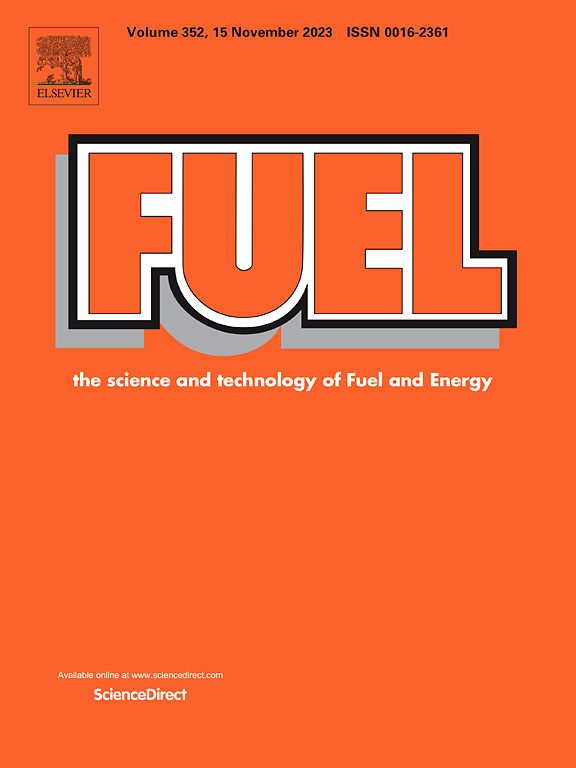煤和生物质化学环燃烧中耐氯Ca-Cu和Ba-Cu氧载体
IF 7.5
1区 工程技术
Q2 ENERGY & FUELS
引用次数: 0
摘要
在含氯煤或生物质的化学环燃烧(CLC)中,氧载体(OCs)和换热设备会被含氯物质严重腐蚀。因此,通过溶胶-凝胶法将钙(Ca)和钡(Ba)基添加剂加入到铜(Cu)基OCs中,构建复合OCs。在固体燃料CLC中,这些oc首次被用于实现高效的氯固定和抗性。系统地研究了Ca/ ba掺杂对气氯固定和燃烧性能的影响。实验结果表明,Ca-Cu和Ba-Cu oc中的碱土金属优先与HCl反应,形成稳定的氯化物,提高晶格氧活性,促进气固反应。此外,Ca/Ba掺杂适度改善了煤和生物质炭的气化。值得注意的是,Ca-Cu OC表现出优异的稳定性,而Ba-Cu OC的燃烧效率则高度依赖于温度。增加氧燃料比并没有改变氯转化为HCl的比例。进一步分析表明,Ca/Ba掺杂增加了OC的比表面积和孔体积,增加了与燃料的接触面积,稳定了CLC的性能。这些发现为碱土金属的氯捕获机制提供了新的见解,促进了耐氯有机碳的开发,以实现高效的CLC应用。本文章由计算机程序翻译,如有差异,请以英文原文为准。
Chlorine-resistant Ca–Cu and Ba–Cu oxygen carriers in chemical looping combustion of coal and biomass
In chemical looping combustion (CLC) of chlorine-rich coal or biomass, oxygen carriers (OCs) and heat exchange equipment can be severely corroded by chlorine-containing species. Thus, calcium (Ca) and barium (Ba)-based additives were incorporated into copper (Cu)-based OCs via a sol–gel method to construct composite OCs. For the first time, these OCs were applied to achieve high-efficiency chlorine fixation and resistance during solid-fuel CLC. The effects of Ca/Ba-doping on gaseous chlorine fixation and combustion performance were systematically investigated. The experimental results demonstrated that alkaline earth metals in Ca–Cu and Ba–Cu OCs preferentially reacted with HCl, forming stable chlorides, increasing lattice oxygen activity, and promoting gas–solid reactions. Additionally, Ca/Ba doping moderately improved coal and biomass char gasification. Notably, the Ca–Cu OC exhibited superior stability, whereas the combustion efficiency of the Ba–Cu OC was highly temperature-dependent. Increasing the oxygen-to-fuel ratio did not alter the proportion of chlorine converted to HCl. Further analysis revealed that Ca/Ba doping increased the OC specific surface area and pore volume, increasing the contact area with fuels and stabilizing CLC performance. These findings provide insights into the chlorine-capturing mechanisms of alkaline earth metals, advancing the development of chlorine-resistant OCs for efficient CLC applications.
求助全文
通过发布文献求助,成功后即可免费获取论文全文。
去求助
来源期刊

Fuel
工程技术-工程:化工
CiteScore
12.80
自引率
20.30%
发文量
3506
审稿时长
64 days
期刊介绍:
The exploration of energy sources remains a critical matter of study. For the past nine decades, fuel has consistently held the forefront in primary research efforts within the field of energy science. This area of investigation encompasses a wide range of subjects, with a particular emphasis on emerging concerns like environmental factors and pollution.
 求助内容:
求助内容: 应助结果提醒方式:
应助结果提醒方式:


